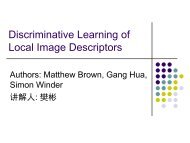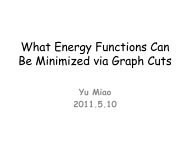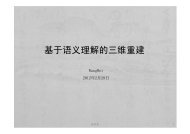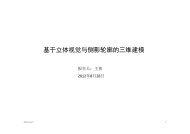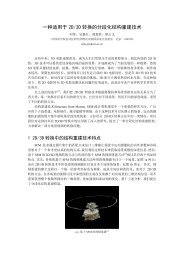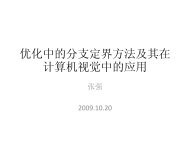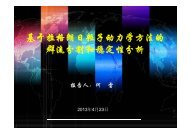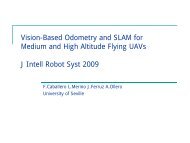Rotationally Invariant Descriptors using Intensity Order ... - IEEE Xplore
Rotationally Invariant Descriptors using Intensity Order ... - IEEE Xplore
Rotationally Invariant Descriptors using Intensity Order ... - IEEE Xplore
You also want an ePaper? Increase the reach of your titles
YUMPU automatically turns print PDFs into web optimized ePapers that Google loves.
This article has been accepted for publication in a future issue of this journal, but has not been fully edited. Content may change prior to final publication.<br />
<strong>IEEE</strong> TRANSACTION ON PATTERN ANALYSIS AND MACHINE INTELLIGENCE 2<br />
Abstract<br />
This paper proposes a novel method for interest region description, which pools local features based<br />
on their intensity orders in multiple support regions. Pooling by intensity orders is not only invariant<br />
to rotation and monotonic intensity changes, but also encodes ordinal information into descriptor. Two<br />
kinds of local features are used in this paper, one based on gradients and the other on intensities, hence<br />
two descriptors are obtained: MROGH and MRRID. Thanks to the intensity order pooling scheme, the<br />
two descriptors are rotation invariant without estimating a reference orientation, which appears to be<br />
a major error source for the most of existing methods, such as SIFT, SURF and DAISY. Promising<br />
experimental results on image matching and object recognition demonstrate the effectiveness of the<br />
proposed descriptors compared to state-of-the-art descriptors.<br />
Index Terms<br />
Local Image Descriptor, Rotation Invariance, Monotonic <strong>Intensity</strong> Invariance, Image Matching,<br />
<strong>Intensity</strong> <strong>Order</strong>s, SIFT.<br />
I. INTRODUCTION<br />
Local image descriptors computed from interest regions have been widely studied in computer<br />
vision. They have become more and more popular and useful for a variety of visual tasks, such<br />
as structure from motion [1]–[5], object recognition [6], classification [7] as well as panoramic<br />
stitching [8].<br />
A good local image descriptor is expected to have high discriminative ability so that the<br />
described point can be easily distinguished from other points. Meanwhile, it should also be robust<br />
to a variety of possible image transformations, such as scale, rotation, blur, illumination and<br />
viewpoint changes, so that the corresponding points can be easily matched across images which<br />
are captured under different imaging conditions. Improving distinctiveness while maintaining<br />
robustness is the main concern in the design of local image descriptors. In this paper, we focus<br />
on designing local image descriptors for interest regions.<br />
Interest regions are usually detected as affine invariant regions (e.g., Hessian-Affine and Harris-<br />
Affine regions [9]) and represented by ellipses, which can be normalized to a canonical region<br />
by mapping the corresponding ellipses onto a circle. Such an affine normalization procedure<br />
has a rotation ambiguity. In order to alleviate this problem, researchers either designed rota-<br />
tionally invariant descriptors [10]–[13] or rotated the canonical/normalized region according to<br />
November 26, 2011 DRAFT



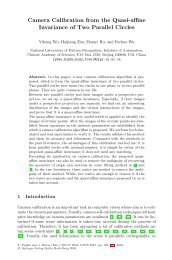
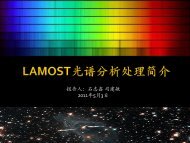
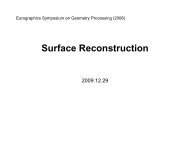
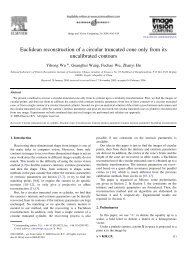
![Accurate, Dense, and Robust Multi-View Stereopsis (PMVS) [1,2,3]](https://img.yumpu.com/19388840/1/190x135/accurate-dense-and-robust-multi-view-stereopsis-pmvs-123.jpg?quality=85)
